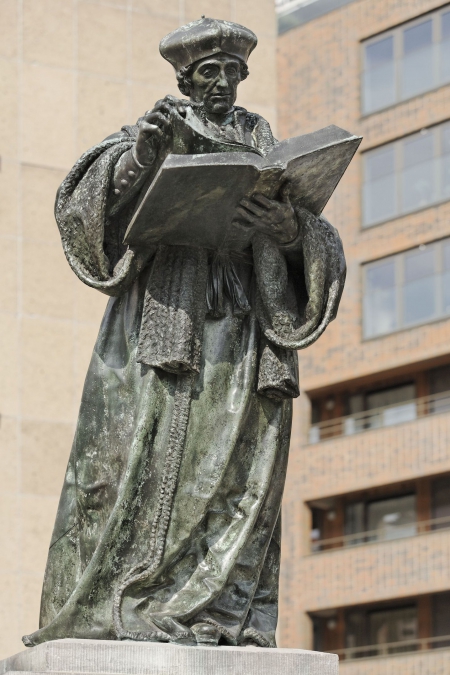Erasmus moves forward two metres
From the press release, February 2009 – The bronze statue of Erasmus, which Hendrick de Keyser created in 1620, will shortly be moved two metres forward on its pedestal on the Grotekerkplein, ahead of the renovation of the entire square.
The whole of the surrounding area is undergoing an intensive restructuring and the square itself has been redesigned with new paving and new lime trees. The atmosphere of the square, currently rather desolate and neglected, will be radically transformed.
Rotterdam’s oldest statue
The renowned bronze statue of Erasmus by the seventeenth-century sculptor and architect Hendrick de Keyser is the earliest work in the Sculpture International Rotterdam (SIR) collection. Made especially for Rotterdam’s public space, Erasmus is the oldest statue cast in bronze in the Netherlands.
The survival instinct
In 1618 Hendrick de Keyser was commissioned to create the design for the statue. However, de Keyser died in 1621, before it was finished. In 1622 the statue was cast in bronze in the gun foundry on the Hoogstraat, under the supervision of de Keyser’s son, Pieter. Erasmus was installed on the Grote Markt (Rotterdam’s main market square) on 30 April 1622. Now almost four centuries old, the statue survived the 1940 bombardment, thanks to being buried in the garden of the then Museum Boijmans Van Beuningen, was subsequently moved to the Coolsingel, and in 1964 was eventually transferred to its current location next to the Laurenskerk (Church of St. Laurence).
Research
SIR commissioned a condition report from a metal restoration firm before the statue was moved. Earlier this year Erasmus was the subject of a comprehensive risk analysis to investigate the impact of weather and environmental conditions on the bronze statue. This report rang no alarm bells, even though the statue has been standing in the open air for almost four centuries.
